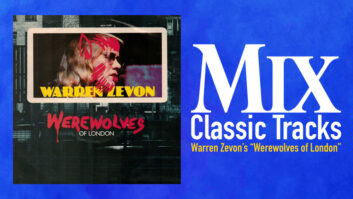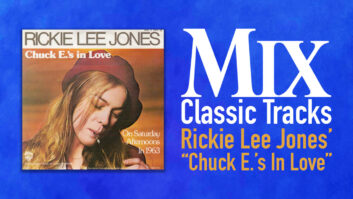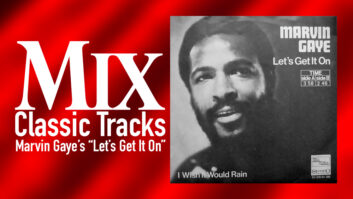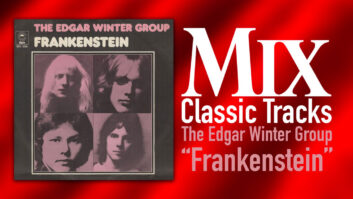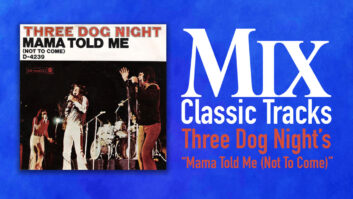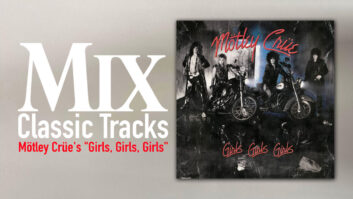
When Joe Walsh walked into Bayshore Recording in Miami’s Coconut Grove neighborhood in 1978, he was on a break in between tracking Hotel California and The Long Run with his adopted band, The Eagles. Bill Szymczyk — who produced and engineered Walsh’s work with his earlier group, the James Gang, all of Walsh’s solo albums dating back to Barnstorm and produced The Eagles — also regarded what would become Walsh’s But Seriously, Folks… LP as a respite from the relentless pursuit of perfection by, and near-constant friction between, Eagle bosses Don Henley and Glenn Frey. It was time to have a little fun on the other side of the continent.
Walsh and Szymczyk rented the 72-foot boat “Endless Seas,” fitted it with an MCI 4-track deck from Szymczyk’s studio and — along with drummer Joe Vitale, bassist Willie Weeks, keyboardist Jay Ferguson and rhythm guitarist Joey Murcia — set sail to the Florida Keys on the kind of indulgent journey that Walsh would comically chronicle in “Life’s Been Good,” his lyrical satire of the rock star life: “My Maserati does 185/I lost my license, now I don’t drive/I have a limo, ride in the back/I lock the doors in case I’m attacked.” Walsh was already a well-known wild man and prankster, so this slice of sarcastic parody was in keeping with his reputation.
The cruise was a low-pressure way to rehearse the songs Walsh had written for But Seriously, Folks…, though ironically, the one song that didn’t have a complete set of lyrics was “Life’s Been Good.” What he did have was music and an arrangement that was approaching the symphonic, with individual movements and a recapitulation of the main theme that would bring the song back to its original light reggae vamp after an extended middle section. Szymczyk looked at it as a project in parts. “We recorded the parts of the song that would have lyrics — the verses and the choruses — as two separate recordings,” he explains, each on its own reel of 2-inch Ampex 456, knowing that there would be some kind of breakdown and solo section to be recorded and inserted later. A somewhat schizophrenic way of making a record, but as Szymczyk likes to point out, “Consider the source.”
The opening kick and snare of “Life’s Been Good” are joined after four bars by Walsh’s Les Paul played through a Fender Twin Reverb; each time the pattern repeats itself, another electric guitar is layered in, using an assortment of Fender Twins, Tweeds and a Champ amp, miked with various condenser microphones including AKG 414s. The track would have four or five electric guitar layers before a dramatic acoustic guitar part is interjected, miked with a KM-84 through a UREI 1176. “Everything about the track was in creating contrasts between parts,” says Szymczyk; this motif would extend to the vocals.
Weeks’ bass is a combination of a DI tap and an Ampeg B-15 amplifier. Ferguson’s Hammond B3 is played through a Leslie; Szymczyk placed a pair of U87s on the upper speakers and an E-V RE-20 on the bottom. The drums have the usual suspects — a Shure SM57 on the snare, an AKG D-12 on the kick and a pair of Neumann U87s for overheads — but Szymczyk added one trick he still relies on: a Sony lavalier mic on the hi-hat. “It has no low-end capability, but all I’m looking for on the hat is 3 kHz, and that’s perfect for it,” he explains.
Cut to two months later, when Szymczyk, Walsh and Vitale returned to Bayshore Recording to create the middle section. Walsh’s friendship with The Who’s Pete Townshend had sparked an interest in sequencing synthesizers, and he and Vitale programmed the simple eighth-note sequence on an ARP Odyssey, though many accounts in print and on the Internet refer to the sound as a Jew’s harp. “Let’s put that one to rest right now,” says Szymczyk. “There was no Jew’s harp on that record. It was all done with a synthesizer.”
Vitale then played a bass part on the ARP and added another unique sound: a grand piano played through the Leslie with the same microphone complement as was used on the B3. The piano first plays the left-hand whole notes and then the block chords in the section. This plus bass and drums created the backdrop for Walsh’s lengthy and languorous guitar solo.
Knowing that the final song would be cobbled together from three separate recordings, back during the original sessions Szymczyk had all the guitars hold the downbeat of the final measure of section one. It was underneath that that the synthesizer would be introduced in section two. The same was done at the end of the middle ARP/guitar solo section, where Vitale played the bass root note and built it in volume and intensity, then cut it short. That then set the stage for the recapitulation of the opening guitar riffs once again, signaling the return of the vocal sections.
Walsh had been working on the lyrics all along, and when he was finished writing, they began recording the vocals. Walsh sang into a U87 with a light touch on an 1176 compressor. But in the mix, seeking the contrast that characterized parts of the music bed, Szymczyk left the verse vocals nearly dry, the better to articulate each couplet’s punch line. On the B-section of each verse, he had Walsh double the lead vocal. Then he, Walsh, Vitale and Walsh’s wife at the time, Jody Boyer, sang the call-and-response background parts: “He’s cool.” “Oh, yeah.” They purposely pitched them low in contrast to Walsh’s reedy lead vocal. Szymczyk added some additional contrasts with processing in the mix: He applied a stereo Eventide digital delay on the lead vocal, with a 40ms delay panned left and an 80ms delay panned right, producing an interesting “canyon-y” effect, as he describes it, which further enhances the verses’ high, lonesome sound. On the choruses, which Walsh also double-tracked, he dropped the delay in favor of a Cooper Time Cube to further thicken the vocal sound. “Every part of the vocal has its own sound,” says Szymczyk. “It was fun. It was ear candy. Remember, this was still like a vacation from The Eagles.”
Classic Tracks: Liz Phair’s “Supernova”
The mix was understandably a bit more complex than usual. Aside from the contrasting processing of various tracks, the song also needed a sound effect for the line “I go to parties sometimes until four/It’s hard to leave when you can’t find the door,” which is followed by a perfectly timed door closing, done in real time by Vitale by shutting the door to Bayshore’s bathroom, with a U87 placed about three feet away and in a nicely resonant hallway.
The many guitars on “Life’s Been Good” were kept distinct by lots of hard panning. In the verses, Walsh’s guitars are panned right and Murcia’s reggae-like licks are in the left channel. Ferguson’s island-sounding B-3 is opposite Murcia. Other than what’s already been noted, the processing was fairly light. A pair of Lexicon 224s — one set for a hall, the other for a room sound — provides some basic ambience for background and chorus vocals.
Szymczyk mixed each of the three sections separately at the 36-input MCI 500 Series console, monitoring through JBL 4310 speakers. (There were Hidley custom monitors soffited above the console, but Szymczyk says they were turned on only late at night, “When we wanted to get nuts.”) This produced three reels of quarter-inch 2-track mixes. Using three MCI 2-track decks and a lot of trial and error, Szymczyk did crossfades between the two edit points, creating the final eight-minute-plus-long song.
After all that work, “Life’s Been Good” almost didn’t make the album. Szymczyk says that Walsh began second-guessing himself, wondering if the lyrics would be perceived as condescending or snarky.
“I tried to do the song funny without coming across as a jerk,” Walsh explained in a 1978 BAM magazine interview. “I think I try to be humble, but I also feel I’ve got some seniority after the years I’ve put in as a musician. I’ve got to admit that even being at the top doesn’t mean anything.”
“I think the best producing job I ever did was convincing Joe that people would understand he was being facetious,” Szymczyk says. “Me and Vitale double-teamed him.” They won Walsh over, and a good thing, too: “Life’s Been Good” would become his biggest hit, topping at Number 12 in Billboard and remaining a staple of classic rock, as well as the theme song for an era of music that, like Wall Street more recently, went someplace amazing for a while and ain’t never coming back.
This article was originally posted in April, 2009.

